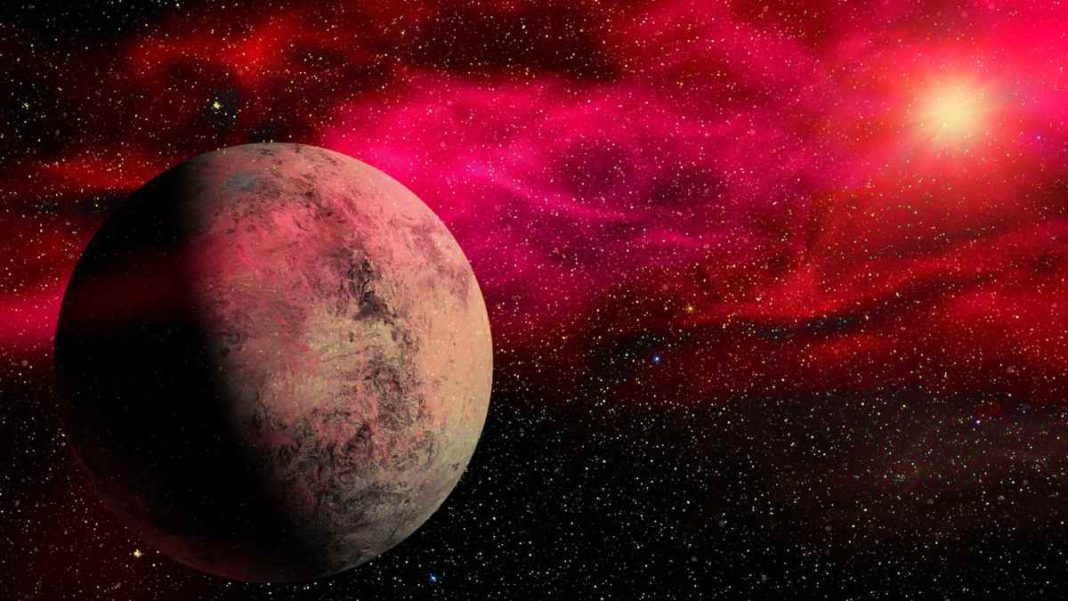INDIA: In a groundbreaking discovery, a team of scientists led by Professor Abhijit Chakraborty from the Physical Research Laboratory (PRL) in Ahmedabad, India, has unearthed an extraordinary alien planet that surpasses Jupiter in size. This remarkable celestial body is the densest exoplanet ever found, measuring 13 times larger than our largest planet.
Located approximately 731 light years away from Earth, this gigantic planet revolves around its star every 7.24 days, presenting an intriguing glimpse into the mysteries of the universe.
The discovery of a massive alien planet
Professor Abhijit Chakraborty and his team at the PRL have achieved a remarkable feat with the discovery of this massive alien planet.
This groundbreaking discovery marks the third exoplanet identified by the PRL scientists, further solidifying their contribution to the field of astronomy.
The findings of their study were published in the prestigious journal Astronomy & Astrophysics Letters, garnering significant attention and acclaim within the scientific community.
Utilising advanced technology for precise measurements
The Indian, German, Swiss, and American teams of researchers used the PRL Advanced Radial-velocity Abu-sky Search spectrograph (PARAS) at the Gurushikhar Observatory in Mount Abu to precisely calculate the mass of the recently discovered exoplanet.
With a mass of 14 g/cm³, this alien planet boasts an extreme density, leading scientists to label it as one of the few known massive giant planets in existence.
This remarkable discovery adds to the population of less than five known objects in this mass range, positioning it as a critical addition to our understanding of celestial bodies.
The alien planet and its host star
The newly discovered planet orbits a star named TOI-4603, classified as a sub-giant F-type star, as observed by NASA’s Transiting Exoplanet Survey Satellite (TESS). TOI-4603 stands out due to its status as one of the few known massive giant planets with an extreme density.
Positioned in the transition mass region between massive giant planets and low-mass brown dwarfs, this unique planet offers valuable insights into the diverse population of celestial objects within this range. The scientists have officially named this alien planet TOI 4603b, or HD 245134b.
A scorching giant in the skies
Situated at a staggering distance of 731 light years from Earth, TOI 4603b circles its host star every 7.24 days. The scorching temperatures on this alien planet reach a blistering 1396 degrees Celsius, making it an inhospitable environment for any form of life as we know it.
The study conducted by the team indicates that the planet’s mass ranges from 11 to 16 times that of Jupiter, highlighting its immense size and fiery nature.
Insights into migration and evolution mechanisms
The exoplanet, which has an eccentricity value of about 0.3 and a surface temperature of 1670 K, is thought to be undergoing high-eccentricity tidal migration. Insights into the formation, migration, and evolution mechanisms of giant exoplanets can be gained very usefully from the discovery of such systems.
The Indian Space Research Organisation (ISRO) expressed the significance of these findings in a press release, highlighting the valuable knowledge gained through the exploration of distant planetary systems.
Conclusion
The discovery of an alien planet 13 times larger than Jupiter and located 731 light years away from Earth represents a monumental achievement in the field of astronomy.
The team of scientists led by Professor Abhijit Chakraborty utilised advanced technology and the indigenous PARAS spectrograph to measure the exoplanet’s mass precisely.
Named TOI 4603b or HD 245134b, this massive celestial body revolves around its star every 7.24 days while enduring scorching temperatures of 1396 degrees Celsius.
This discovery provides crucial insights into the formation, migration, and evolution of massive exoplanets, deepening our understanding of the universe.
Also Read: Scientists Offers New Explanation for Why We Haven’t Found Aliens Yet



